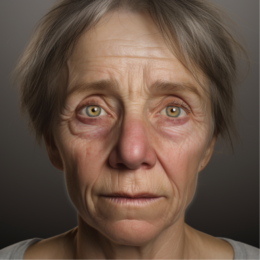Understanding the Complex Causes of Autism Spectrum Disorder

We thought you might like these too…
High-Functioning Autism: Definition, Signs, and Diagnosing
What Is Autism Spectrum Disorder: All You Need to Know
How to Diagnose Autism in Adults? (Symptoms, Tests + More)
Autism is a topic that has garnered significant attention over the years. With increasing numbers of diagnoses and heightened public awareness, many are left wondering: what causes autism? This article delves into the latest research and statistics to comprehensively understand the factors contributing to autism. We invite you to read on, reflect on the experiences of Jamie, and share your own stories.
Definition and Prevalence of Autism
What is autism spectrum disorder? It’s a broad range of conditions characterized by challenges with social skills, repetitive behaviors, speech, and nonverbal communication. The term “spectrum” signifies the vast variability in challenges and strengths of each person with autism. Recent studies suggest that 1 in 54 children is diagnosed with ASD, making it a pressing public health concern.
Genetic Factors
The Role of Genetics in Autism
Genetics plays a pivotal role in autism. While no single gene has been identified as the cause, several genetic mutations increase the likelihood of developing autism. These mutations might be inherited or occur spontaneously.
Genetic Mutations and Copy Number Variations

Genetic mutations can sometimes result in missing or duplicated stretches of DNA, known as copy number variations. These variations are believed to play a role in autism, especially when they occur in genes associated with brain development.
Twin and Sibling Studies
Studies involving twins and siblings provide valuable insights into the genetic basis of autism. Identical twins, who share 100% of their genes, are more likely to be affected by autism compared to fraternal twins.
Environmental Factors
Prenatal Factors
Certain factors during pregnancy have been associated with an increased risk of autism. These include maternal infections, medication use, and nutritional deficiencies during pregnancy.
Perinatal and Early-life Factors
Complications during birth, such as oxygen deprivation, can increase the risk of autism. Additionally, premature birth and low birth weight have been linked to a higher likelihood of ASD.
Postnatal Factors
Postnatal factors, such as childhood infections and exposure to certain environmental toxins, are being investigated for their potential links to autism.
Neurobiological Factors
Brain Structure and Connectivity
Individuals with autism often exhibit differences in brain structure. Certain regions may be larger or smaller, and their connections might differ from those without autism.
Neurotransmitter Imbalances
Neurotransmitters, the chemicals responsible for transmitting signals in the brain, might be imbalanced in individuals with autism. This could affect mood, behavior, and cognitive functions.
Mirror Neuron System and Social Cognition
The mirror neuron system, crucial for understanding and imitating others’ actions, might function differently in those with autism, affecting their ability to empathize and understand social cues.
Immunological Factors
The Immune System’s Role in Autism
Growing evidence suggests that the immune system might play a role in autism. Some individuals with autism show signs of immune system dysregulation, though the implications of this are still being explored.
Autoimmunity and Neuroinflammation
Some research suggests that mothers with autoimmune conditions might have a slightly increased risk of having children with autism. Additionally, inflammation in the brain has been observed in some individuals with autism.
Gastrointestinal Issues and their Potential Link to Autism
Many individuals with autism experience gastrointestinal issues, such as constipation or diarrhea. While the connection between these issues and autism isn’t fully understood, it’s an active area of research.
Quick Poll
Environmental Toxins
Environmental Toxins and their Impact on Neurodevelopment
Exposure to environmental toxins, especially during critical periods of brain development, might increase the risk of autism. Pesticides, air pollutants, and certain chemicals have been investigated for their potential links to autism.
Mercury, Lead, and Other Heavy Metals
Exposure to heavy metals, especially during early childhood, has been a topic of concern. While some studies suggest a potential link between heavy metals and autism, the evidence is not conclusive.
Endocrine-Disrupting Chemicals
Chemicals that disrupt the endocrine system can interfere with hormone production and function. Their role in autism, especially when exposure occurs in the womb, is being studied.
Epigenetics and Gene-Environment Interaction
How Epigenetic Modifications Can Influence Autism Risk
Epigenetics refers to changes in gene activity without alterations to the underlying DNA sequence. Environmental factors can lead to these changes, which might influence the risk of autism.
The Interplay between Genes and the Environment
Both genetic and environmental factors contribute to autism. Understanding how they interact is crucial for comprehensively understanding the disorder’s etiology.
The Broader Autism Phenotype (BAP)
Understanding the Characteristics of BAP
BAP refers to individuals who exhibit some traits of autism but don’t meet the criteria for a diagnosis. These traits might include social awkwardness, communication challenges, or repetitive behaviors.
Its Potential Role in the Etiology of Autism
Understanding BAP can provide insights into the broader spectrum of autism traits and their underlying causes.
The Importance of Early Intervention
Early Signs and Diagnosis of Autism
Early signs of autism can manifest as early as infancy. These might include reduced eye contact, lack of response to their name, or delayed speech development.
The Impact of Early Intervention on Autism Outcomes
Early intervention, tailored to address specific challenges, can significantly improve outcomes for children with autism. This might include speech therapy, behavioral interventions, or occupational therapy.
Jamie’s Journey: A Glimpse into Autism
Meet Jamie, a vibrant 8-year-old with a passion for painting. Jamie was diagnosed with autism at age 3. While the journey hasn’t been easy, Jamie has made remarkable progress with the support of loved ones and early intervention. Jamie’s story reminds us that behind every statistic is a unique individual with dreams, challenges, and triumphs.
Conclusion
Autism is a multifaceted disorder influenced by genetic, environmental, and neurobiological factors. While much has been learned about what are signs of autism and what are symptoms of autism, research continues to unravel its complexities.
WE INVITE YOU TO REFLECT ON JAMIE’S JOURNEY AND SHARE YOUR OWN EXPERIENCES. HOW HAS AUTISM TOUCHED YOUR LIFE?





